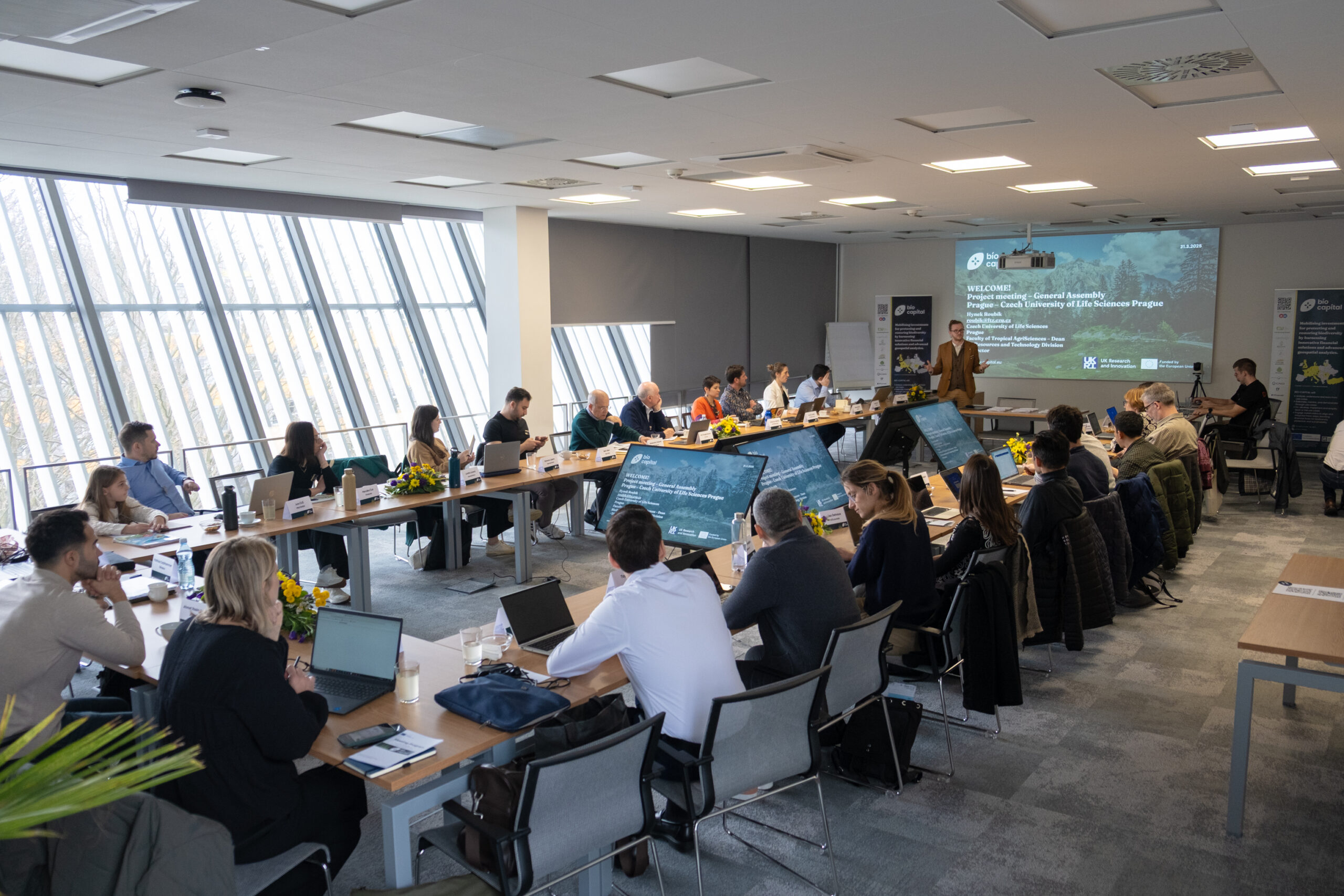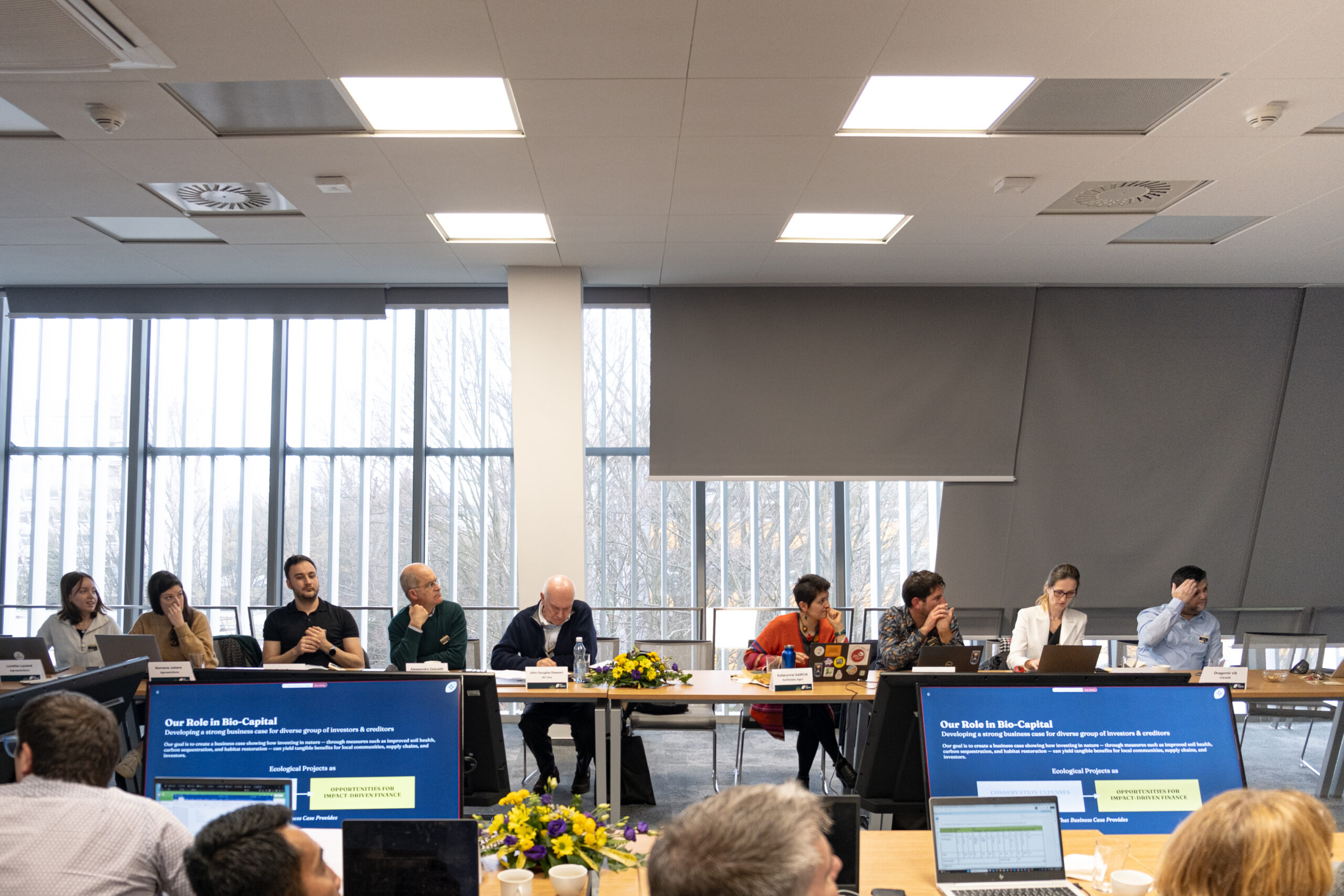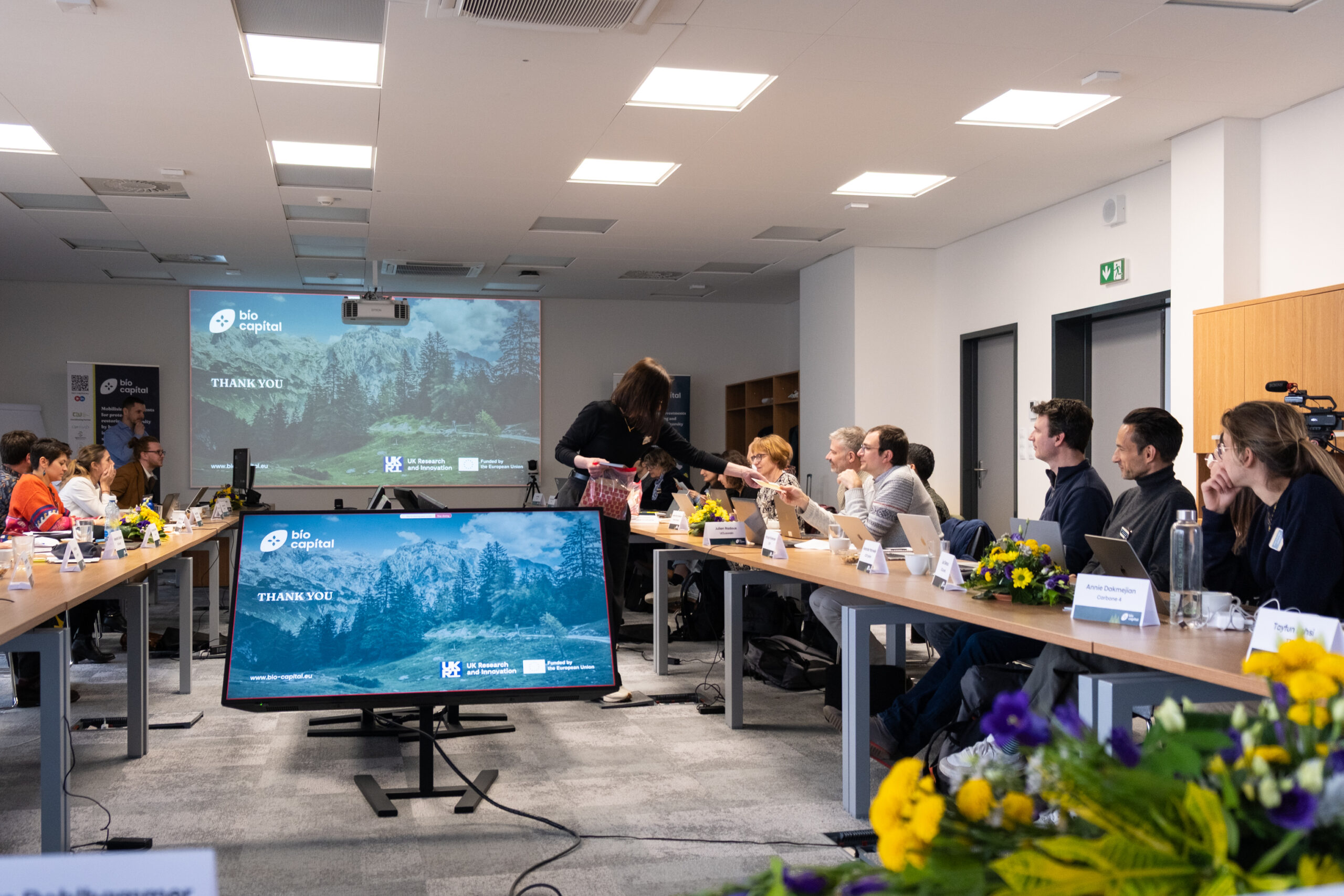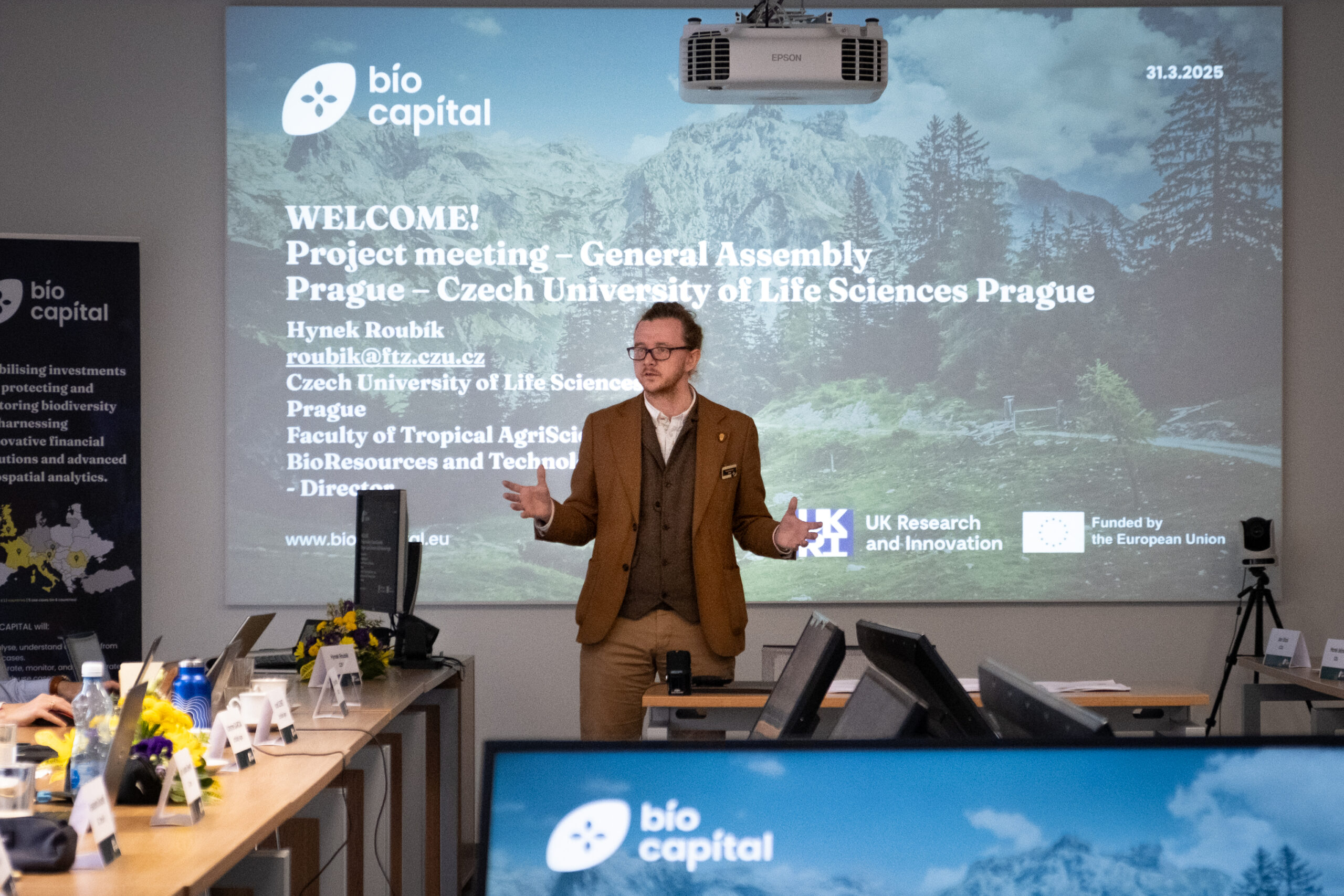Satellites, Seeds and Sustainability: BIO-CAPITAL Meeting in Prague


At a pivotal gathering in Prague, the BIO-CAPITAL consortium advanced its mission to link biodiversity conservation with innovative financial and geospatial solutions.
The BIO-CAPITAL partners have met in Prague to review the progress of their mission: to develop models for biodiversity protection combining innovative financial tools and geospatial technologies. The meeting at the Czech University of Life Sciences, brought together more than 40 researchers, technical experts, and local implementation teams from five pilot regions.
Multidisciplinary projects allow participants to broaden their horizons. This requires mutual explanation and understanding.The thematic and methodological diversity of the BIO-CAPITAL project’s approach became clear once more in Prague – as did its challenges. After all, when environmental experts, satellite earth observation specialists and financial tool developers get together, they first of all have to explain the basic concepts of their respective fields to each other. This exchange is a defining feature of cross-sectoral collaboration. In the best cases, it is precisely at these intersections that novel insights and transformative approaches emerge.
At the heart of BIO-CAPITAL’s integrative strategy are its five Use Cases, which act as spatial focal points where diverse forms of expertise are applied to real-world challenges. These testbeds—ranging from Alpine forests to British river corridors—demonstrate how biodiversity outcomes can be linked with sustainable finance mechanisms.
In Austria and Italy, Use Case 1 is tackling unsustainable forest practices, particularly in timber extraction. Case studies range from deadwood management to mixed-species forests. BIO-CAPITAL aims to propose viable solutions that align ecological goals with the economic needs of stakeholders like logging companies. Use Case 2 in France has expanded its farmer engagement to over 20 participants. These “pioneer farmers” are experimenting with biodiversity-supportive practices such as hedgerows, grass strips, and wetland buffers. However, accessing financial incentives remains difficult, and new approaches are being tested to monitor biodiversity uplift through remote sensing.
In Romania, Use Case 3 is focused on agroecological practices in the southeast, comparing organic and conventional farms. Satellite imaging—at resolutions down to 30 cm—is being used to monitor changes, though current efforts focus on the meter scale. Use Case 4 in Slovenia is working in species-rich grasslands, with pilots inside and outside the Goričko Landscape Park. Despite strong ecological data, land abandonment and weak socioeconomic conditions present barriers to implementation. Pratensis, one of the partners, distributed local seed mixtures to illustrate potential restoration strategies. In the UK, Use Case 5 is centered on river corridors and wetlands. The Westcountry Rivers Trust is trialing incentive mechanisms and soil-based monitoring.
The Prague meeting marked an important milestone for BIO-CAPITAL. It provided valuable insight into on-the-ground progress and fostered constructive dialogue around methodological approaches. Equally important, it offered a rare opportunity for all project partners to meet in person—deepening collaboration and strengthening the sense of a shared mission. As the meeting highlighted, research and innovation are not solo endeavors; they are inherently collaborative. In BIO-CAPITAL, biodiversity protection is truly a team sport.
Many thanks to the team at the Czech University of Life Sciences for organising the meeting and for their hospitality.


